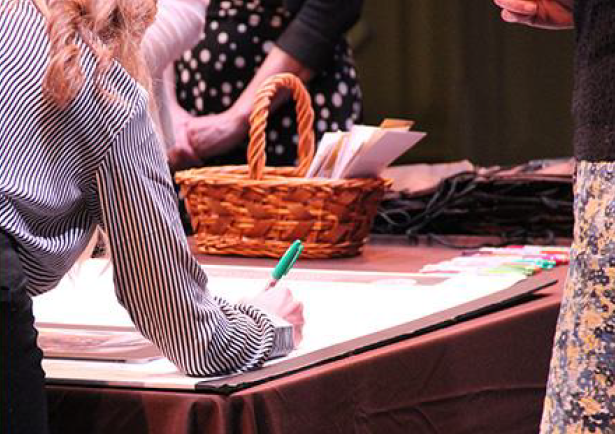Coats and Coating Procedure
 For nursing schools who incorporate white coats into their ceremony, order white coats (or your school’s equivalent) with plenty of time to allow for any customization (such as embroidered names, or patches), placement of pins and pocket cards, and/or rectification of any error with the order.
For nursing schools who incorporate white coats into their ceremony, order white coats (or your school’s equivalent) with plenty of time to allow for any customization (such as embroidered names, or patches), placement of pins and pocket cards, and/or rectification of any error with the order.
Students should receive their white coats before the ceremony. White coats can be hung in alphabetical order or alternatively placed folded on each student’s assigned chair.
Coating is typically done as students cross the stage. Select and invite multiple coaters to keep the process moving smoothly. Schools use a variety of coaters , such as orientation advisors, department chiefs, faculty mentors, distinguished alumni, family members, etc. Typically, students are coated in small groups depending on the number of coaters . As names are announced, each student takes his or her place in front of a coater. Once all students are in place, the coaters place the coats on their respective students in unison. Then, the next group of students takes their place.
If gifts are given, they can be handed out as the student exits the stage.
Confirm and prepare participants for the process and their roles in the ceremony: who will coat students, distribute gifts, shake hands, etc. Some schools schedule a brief rehearsal.
For guidance on hosting a virtual ceremony or one with remote components, visit our Nursing Ceremony Toolkit which each include a webinar recording on virtual ceremonies and other resources.
 All accredited medical schools, nursing schools, and physician assistant schools are eligible to receive Keeping Healthcare Human lapel pins from the Gold Foundation. The pin welcomes students to their new profession and serves as a persistent reminder of their commitment to treat patients with dignity and respect.
All accredited medical schools, nursing schools, and physician assistant schools are eligible to receive Keeping Healthcare Human lapel pins from the Gold Foundation. The pin welcomes students to their new profession and serves as a persistent reminder of their commitment to treat patients with dignity and respect.  For nursing schools who incorporate white coats into their ceremony, order white coats (or your school’s equivalent) with plenty of time to allow for any customization (such as embroidered names, or patches), placement of pins and pocket cards, and/or rectification of any error with the order.
For nursing schools who incorporate white coats into their ceremony, order white coats (or your school’s equivalent) with plenty of time to allow for any customization (such as embroidered names, or patches), placement of pins and pocket cards, and/or rectification of any error with the order.
 A processional and recessional set a celebratory tone for the event. Confirm musical arrangements for your ceremony and ensure they are adequately supported by your event site. For example, a live solo piano or string music will likely need to be amplified to be sufficiently audible.
A processional and recessional set a celebratory tone for the event. Confirm musical arrangements for your ceremony and ensure they are adequately supported by your event site. For example, a live solo piano or string music will likely need to be amplified to be sufficiently audible.